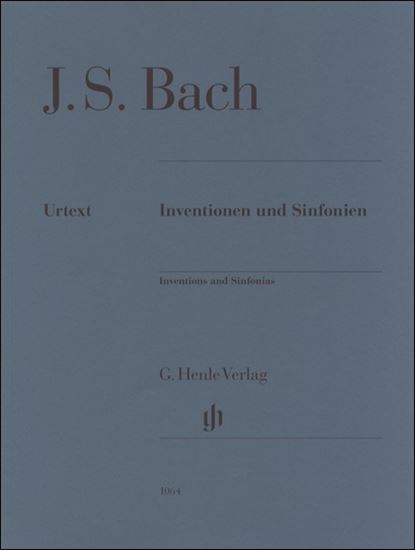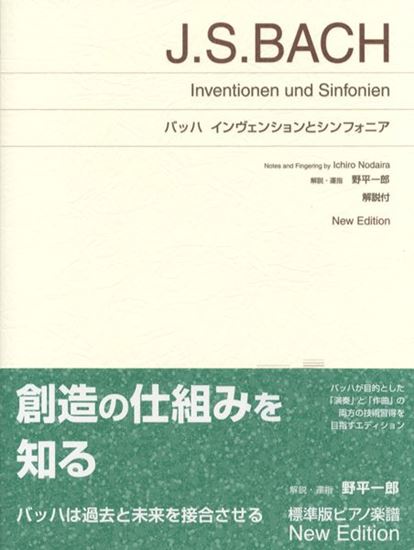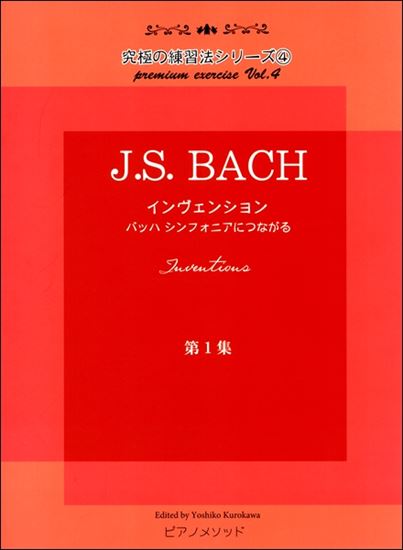Bach, Johann Sebastian : Invention Nr.6 E-Dur BWV 777
Work Overview
Genre:pieces
Total Playing Time:1 min 30 sec
Copyright:Public Domain
Commentary (3)
Author : Takamatsu, Yusuke
Last Updated: September 18, 2020
[Open]
Author : Takamatsu, Yusuke
E major, 3/8 time.
The characteristic "inventio" (invention/idea) in this piece is likely the syncopation in both voices. At the beginning, while the lower voice ascends diatonically, the upper voice descends chromatically, offset by a half-beat. Furthermore, this four-measure subject is repeated with the voices exchanged (this contrapuntal technique of exchanging multiple voices is called invertible counterpoint).
It is also noteworthy that this is the only piece among the Inventions that includes a repeat sign within the movement. The first section (A), delimited by this repeat sign, progresses from E major to the dominant B major. The second section consists of a developmental middle section (B) and a return of A, which closes the piece in the tonic key (||:A:||:BA:||). This scheme (a two-part form with the return of A) indicates an approach to instrumental forms that would be theorized as "sonata form" in the first half of the 19th century.
Author : Hayashikawa, Takashi
Last Updated: January 31, 2018
[Open]
Author : Hayashikawa, Takashi
Italicized motifs are marked with M to distinguish them from the two themes.
Composed in sonata form, the development section utilizes the opening syncopated motif and the rhythmic motif from the fourth measure.
Score examples courtesy of: Bärenreiter Verlag
Author : Ooi, Kazurou
Last Updated: March 12, 2018
[Open]
Author : Ooi, Kazurou
No. 6 in E major
Bach's E major can be described as a relatively subdued key. When listening to E major pieces such as the Sinfonias, Well-Tempered Clavier, or French Suites, one does not feel much inner strength; instead, there is a mood full of elegance and a certain delicacy.
Articulation
Patterns combining 16th notes and 32nd notes, such as in measure 4, appear multiple times throughout the piece. For this measure, the articulation is: the 16th note staccato, the two 32nd notes legato, the subsequent 16th note staccato. This pattern repeats: two 32nd notes legato, the next 16th note staccato, and finally, the last two 32nd notes legato, connecting to the next measure. All other rhythmic patterns can generally be played legato (of course, many exceptions are possible, so the final decision rests with the performer).
Technical Considerations
The C# in the left hand at the end of measure 10 must descend to a D# 14th lower in the next measure. In this case, the pattern of three eighth notes in the left hand begins in measure 9 and continues until measure 15. Even if these are played legato, the wide leaps from measure 10 to 11 and from measure 12 to 13 will inevitably cause a break. While it might be acceptable for them to break, it is also possible to connect them with a momentary pedal. Please consider this as an option.
Balance of Two Voices
From measure 1, the notes in the right and left hands already appear alternately. In such patterns, playing both voices at the same volume can sound quite rigid. By playing one of the voices softly, for example, pp, the polyphonic order of both voices can be maintained.
Dynamics
Judging from the character of the piece, it is not a work that requires extremely loud dynamics. While the volume increases from the middle section onwards, in the author's personal opinion, measure 39, where the Neapolitan sixth chord is used, is likely the point of highest tension. Alternatively, measure 58 could also be played with increased volume.
Sequences
In addition to straightforward sequences like measures 9-10 and 11-12, for example, the three sequences in measures 33-34, 35-36, and 37-38 each have distinct harmonic characteristics. Measure 38, where they lead, features a Neapolitan sixth, so it can be considered a section of high tension. It is uncertain whether measures 29-32 can be called a sequence, but the character of each measure is distinct, so please give each its own expression.
PTNA & Partner Channel Videos(11items) View More
Sheet MusicView More
Scores List (36)

カワイ出版

(株)ヤマハミュージックエンタテインメントホールディングス
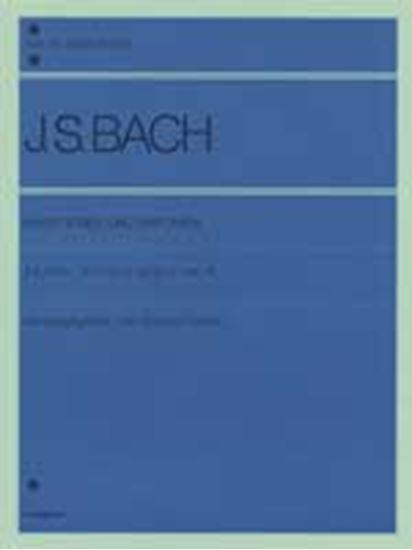
(株)全音楽譜出版社
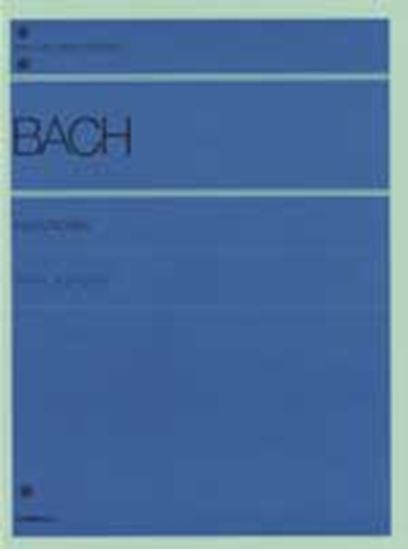
(株)全音楽譜出版社

(株)ドレミ楽譜出版社

(株)音楽之友社

(株)全音楽譜出版社

(株)音楽之友社

(株)音楽之友社

(株)ドレミ楽譜出版社

(株)ドレミ楽譜出版社

(株)ドレミ楽譜出版社

(株)ドレミ楽譜出版社

カワイ出版

(株)渓水社

(株)音楽之友社

(株)全音楽譜出版社

(株)エー・ティ・エヌ

(株)全音楽譜出版社

カワイ出版

(株)音楽之友社

(株)音楽之友社

(株)東音企画(バスティン)

(株)ヤマハミュージックエンタテインメントホールディングス

Neil A. Kjos Music Company














